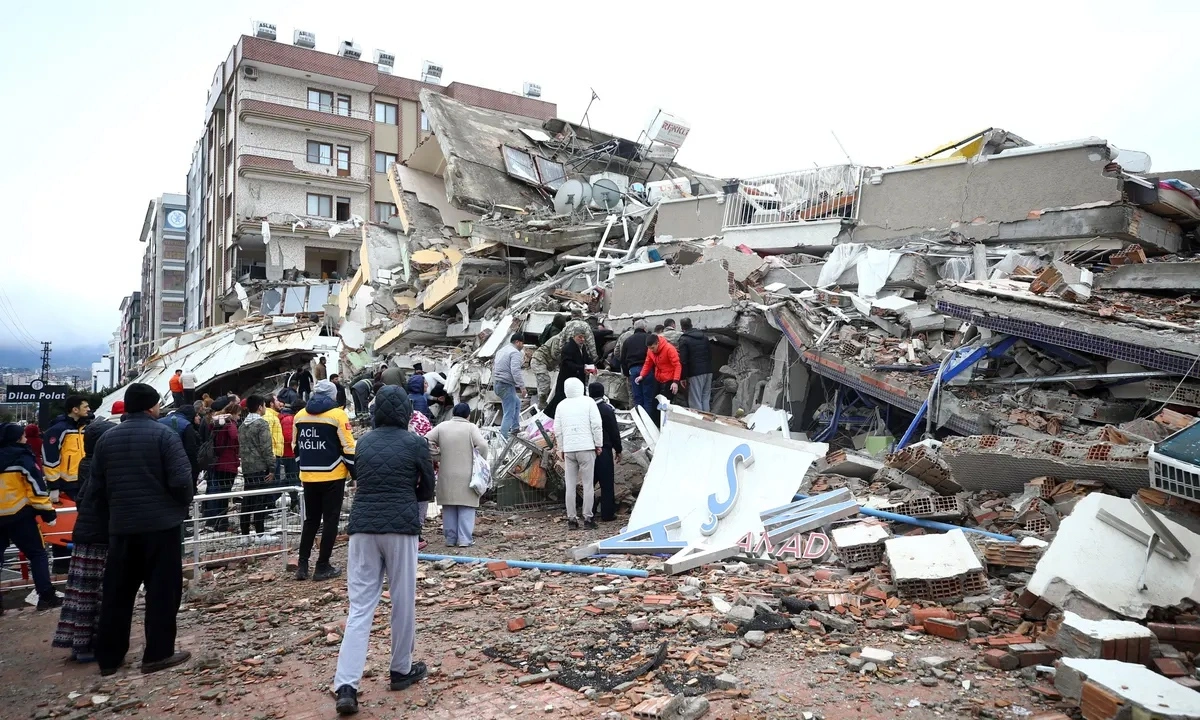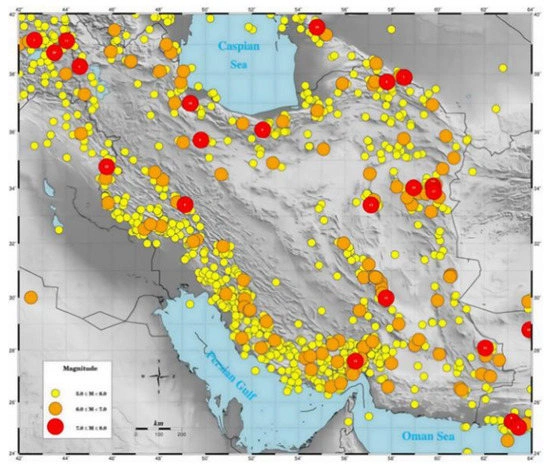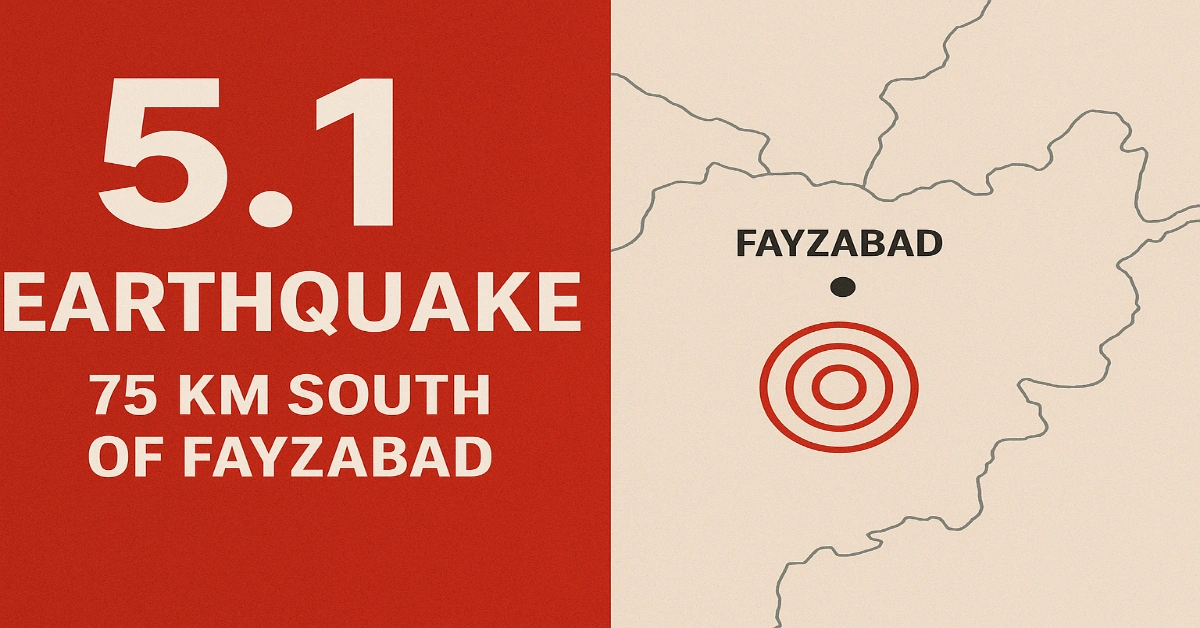A sudden earthquake shook the area, forcing people out of homes. Another earthquake wave caused panic as walls cracked. Later, a third earthquake reminder kept families awake, while rescue teams advised safety and calm during this difficult time.
The 5.1 magnitude earthquake in Pakistan, Jurm, and Badakhshan, Afghanistan once again showed the importance of preparedness and staying calm in times of natural challenges.
Epicenter and Location Details: Jurm, Badakhshan, Afghanistan
The epicenter was located in Jurm, Badakhshan, Afghanistan, an area surrounded by high mountains and near the borders of Pakistan and Tajikistan. Because of this location, the earthquake tremors were felt across many regions. Experts say the depth of the quake influenced how far the shaking spread. Clear epicenter details are important to understand risks and guide safety steps.
Overview and Magnitude of the Earthquake
The recent earthquake recorded a 5.1 magnitude, making it strong enough to shake buildings and be widely felt. People in nearby areas quickly moved outside for safety as tremors spread. Though not extremely destructive, this level of quake can still cause structural cracks and raise fear among communities. Understanding its magnitude helps experts assess risks and guide preparedness for future events.
Also Read:Murree Weather Today – Perfect Hill Escape!
Seismic Activity and Geological Causes in the Region
Seismic activity in the region mostly happens due to the collision of the Indian Plate and Eurasian Plate, which also formed the Himalayas. Major fault lines like the Chaman Fault in Pakistan create pressure deep inside the Earth, and when this pressure releases, earthquakes occur. Other geological causes include underground rock stress and continuous mountain building. Because of these natural forces, the region often faces strong tremors, making it important to study and prepare for such events.
Timeline: When and How the Earthquake Happened
The earthquake started with a sudden release of underground pressure along fault lines, sending strong waves through the ground. Within moments, the epicenter shook the hardest, and nearby cities also felt powerful tremors. Most destruction happened in the first few minutes as weak buildings and roads collapsed. Aftershocks followed for hours and days, showing how the Earth kept releasing its energy step by step.
Impact on Pakistan and Affected Areas
The earthquake hit Pakistan with powerful shocks, shaking cities and villages across the country. Northern areas like Kashmir, Khyber Pakhtunkhwa, and Balochistan were the hardest hit, where homes and roads were badly damaged. The earthquake came with repeated tremors and aftershocks, which caused more fear and destruction. Many people lost their houses, faced shortages of food and water, and struggled with slow recovery in the affected regions.

Also Read:Flood in Swat 2025: Support Swat 2025!
Casualties, Injuries, and Human Impact
The earthquake struck Pakistan multiple times with strong shocks and aftershocks, causing heavy loss of life and injuries. Thousands of people were buried under collapsed houses, while many more were hurt and taken to crowded hospitals. Repeated tremors increased fear, leaving families homeless and struggling for food, water, and medical care. The human impact was deep, as survivors faced both physical pain and emotional trauma.
Damage to Infrastructure and Buildings
The earthquake destroyed thousands of houses, schools, and hospitals, leaving many families without shelter. Roads and bridges were badly damaged, cutting off rescue teams from remote areas. Power lines, water supply, and communication systems also broke down, creating more problems for survivors. Repeated tremors further weakened standing buildings, making them unsafe and dangerous to live in.
Government, Emergency, and Relief Response
After the earthquake, the government and emergency teams quickly started rescue and relief work. Army and rescue forces helped take out people trapped under rubble, while medical teams treated the injured. Camps were set up to provide food, water, and shelter to homeless families. International aid also supported Pakistan, but damaged roads and repeated tremors made relief work slow and difficult. Despite challenges, joint efforts saved many lives and began the path toward recovery.
Public Awareness, Preparedness, and Safety Measures
Public awareness and preparedness are the best ways to reduce earthquake risks. People should know safety steps like “Drop, Cover, and Hold” during tremors and avoid standing near weak walls or glass. Communities need training drills in schools, offices, and villages to react quickly when shocks come. Strong building codes, emergency kits at home, and clear evacuation plans can save many lives. With proper awareness and safety measures, the impact of future earthquakes can be greatly reduced.
Historical and Comparative Analysis of Earthquakes in the Region
The region has faced many deadly earthquakes, each showing how fragile life and infrastructure can be. The 2005 Kashmir earthquake caused massive destruction and over 80,000 deaths, while later quakes in Balochistan (2013) and Afghanistan-Pakistan border areas (2022) also brought heavy losses. Comparing these events shows that areas with weak buildings and poor preparedness suffer the most damage. Past experiences highlight the urgent need for stronger construction, early warning systems, and public training to reduce future risks.





Join The Discussion